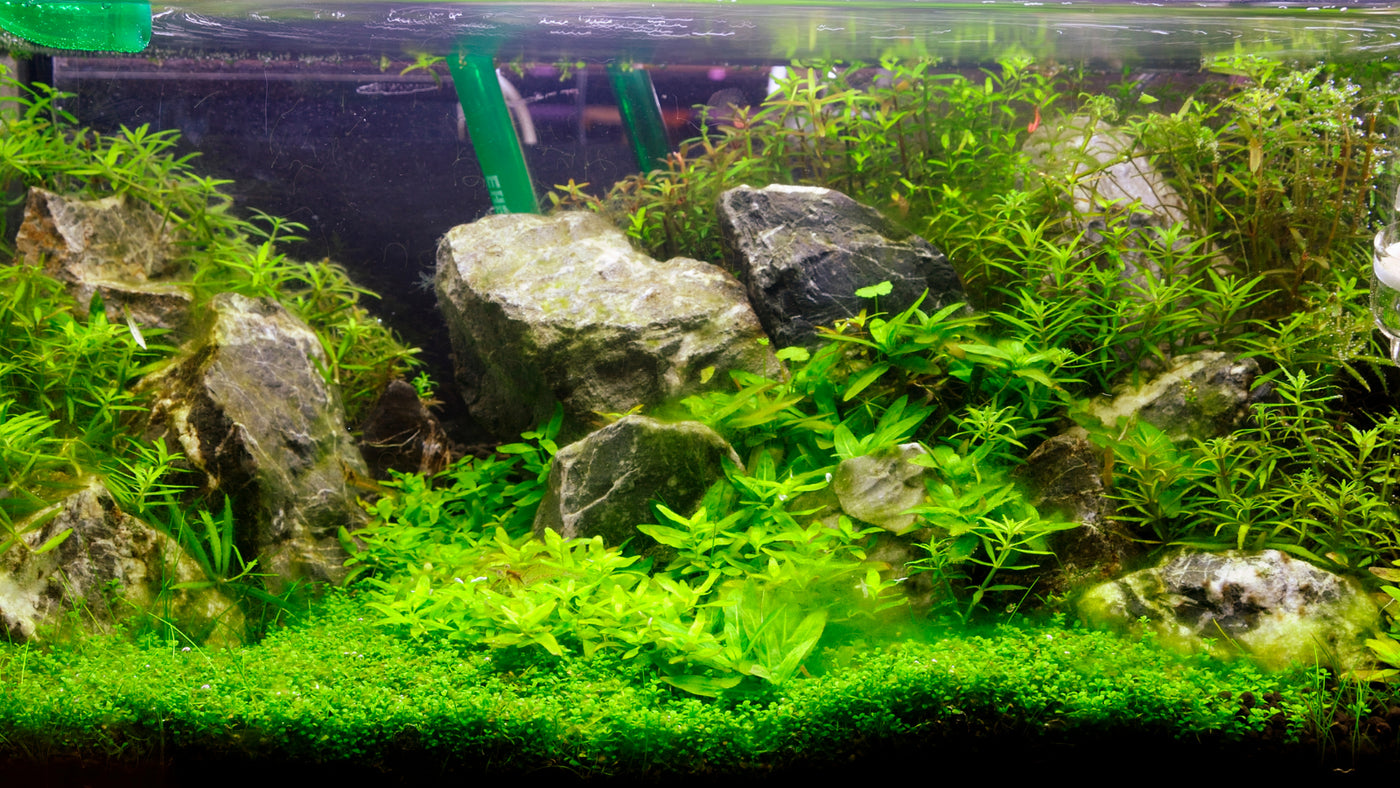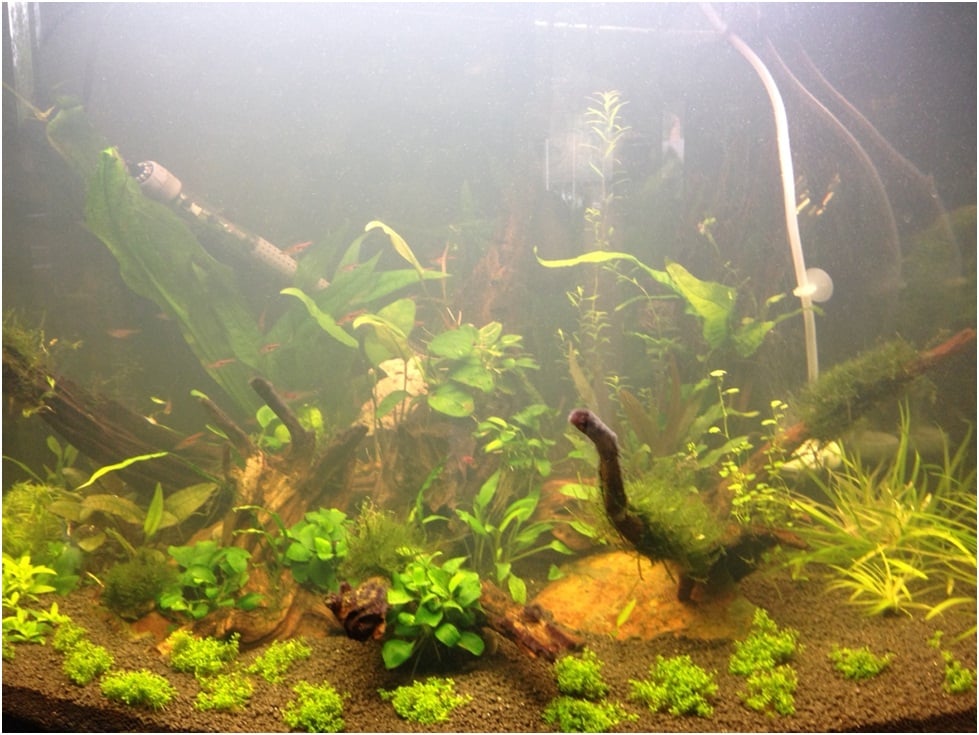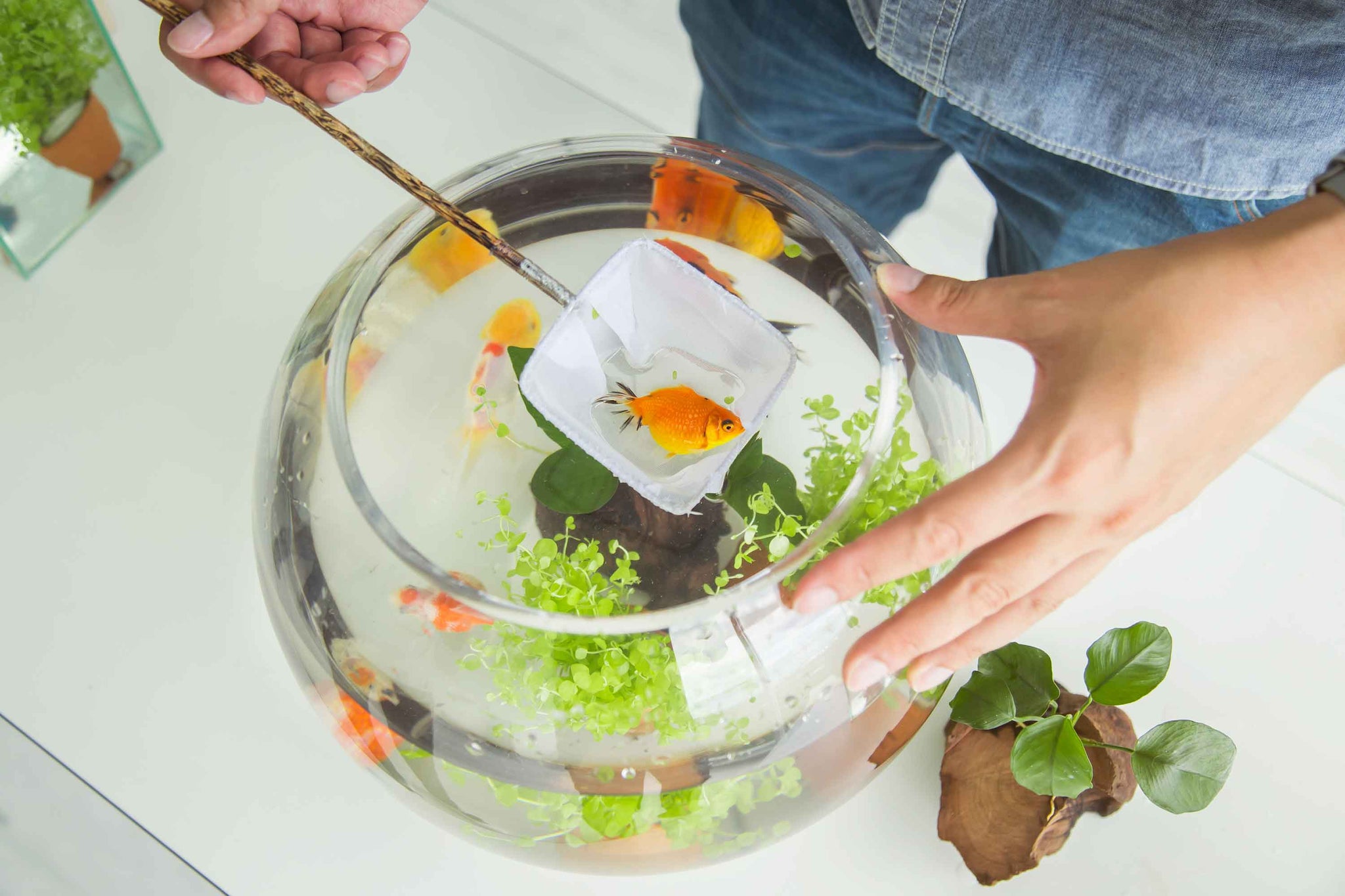
How to grow carpet plants in an aquarium
In this article, we want to explain the easiest methods for growing - and looking after a beautiful green carpet in your planted tank. With a few simple steps, growing carpet plants is not as difficult as it may seem.
One of the most common mistakes committed by hobbyists is related to root and plant growth. A common mistake is letting carpet plants grow too high, which, when trying to create a dense carpet, can become frustrating and, more often than not, results in the carpet plants being replaced by some typical foreground plants.
Glossostigma elatinoides (Glosso)is a great carpet plant found in New Zealand swamps. Known for its ability to increase and cover an area very well.
Hemianthus callitrichoides (HC Cuba) Is commonly used to grow a carpet area of a planted tank because of its size. Being so small, it creates a nice carpet, but the downside is that it is probably one of the most challenging plants to grow successfully.
Eleocharis parvula ( Dwarf Hairgrass) looks beautiful in a carpeted tank. It is a fast-growing Plant that can require trimming almost every week. One of the main appeals of this particular plant is its ability to look just like a beautiful lawn, transforming any planted aquarium.
To succeed in planting aquarium carpet plants or aquatic plants, in general, use a nutrient-rich substrate. Growing plants without the correct substrate can cause issues with the root system and even affect the rate at which your aquatic plants spread out. Aquarium carpet plants tend to be shorter, and instead of drawing nutrients from the water column, they pull more of their nutrients from the substrate via their roots. All good aquarium carpets have a very compact structure of the roots below. To avoid root compression, mix any powdered substrate with a more coarse soil and add the correct substrate level. Additionally, algae can become a problem in a planted tank when the growth rate is reduced.
Another success element is providing enough co2 and an effective light unit. Using timers, you can easily create a steady and consistent daily pattern for both light and Co2, which makes life easier for you but also encourages continued and healthy growth for your new aquarium carpet and, of course, your entire planted tank. The most popular routine has your CO2 turn on one hour before your lights switch, and then your CO2 stop an hour before your lights go off. Doing this provides your planted aquarium with maximum CO2 during what is known as the 'photo period' (when lights are on).
New horizontal growth is dense. new individual plantlets spread quickly, almost in a grid pattern and fill up space quickly.
Maintenance
Regular maintenance of a fish tank carpet doesn't take up a lot of time. The trimming takes only five minutes, followed by two or three minutes to gather the cuttings.
If they are well-rooted, most carpeting plants are relatively straightforward (and very satisfying) to trim. By employing the help of curved aquascaping scissors, you can effectively shorten and shape any carpet plant. Furthermore, with most carpeting plants, the trimmings will float to the aquarium's surface, making removal easy. A small surface skimmer can help gather the cuttings from your aquarium plants straight from the surface, making it even easier.
Making sure you have the correct aquascaping tools will make your life much easier. The curved scissors are suitable for precision work, especially for small and more delicate carpet plant species such as Hemianthus callitrichoides (HC Cuba). Trimming well-rooted, larger plants such as Cryptocoryne or Staurogyne Repens with regular aquascaping scissors or even your fingertips (if you are gentle) is perfectly ok.
After trimming, your lush green carpet may look a little worn out but be assured, in a healthy aquarium, you will see a lovely carpet requiring trimming yet again within two weeks. Luckily, trimming your carpeting plants does not disturb the substrate, so it is not essential to perform a water change afterwards. Plants such as Eleocharis, Riccia, mosses, and other similar species also benefit from regular trimming. Keeping a close eye on your entire aquascape, looking out for new growth and older leaves, will guide you on where to trim each plant. Don't be afraid to cut your plants. Healthy plants and plants that may have had some damage due to algae will both benefit from trimming. It encourages new growth and will help to keep clean of detritus and other impurities that may promote an algae bloom. You can find out more about that in this BLOG.
Depending on the growth rate and liquid fertilizers routine, it's recommended to trim your carpet plants every 2-4 months. However, if your plants are overgrowing, they naturally tend to become overlapped, creating a lot of layers. When this happens, it is time to trim. If left to grow this way, the top layers will block the light from reaching the lower levels, leading to the lower-level plants perishing. In a new tank, it is recommended to avoid a good trim shortly after planting, especially with a carpeting plant. As long as you have the proper substrate, ph level, water temperature, and light and carbon dioxide levels, your new carpet plant will become a dense carpet in no time.
Remember that maintaining a healthy, thick carpet is not easy. Patience is essential, and time must be given to achieve anything. It is strongly advised that to achieve optimal conditions, carbon dioxide is necessary. The same generally applies to most foreground plants. By nature, they usually are shorter and will also require intense lighting. You can check out our co2 kits here - COMPLETE CO2 SYSTEM.
If you prefer to maintain a low-tech tank, we recommend avoiding carpeting plants and planting smaller plants that are more suited for a low-tech setup. Staurogyne repens and Dwarf Sagittaria are both, in fact, great low-tech carpeting plants. Planting them in a quality nutrient-rich substrate alongside some root tabs and regular liquid fertilizer will produce a nice carpet at a slower growth rate.
If opting for no CO2 injection, pay attention to the light unit capacity to avoid imbalance and unwanted algae growth.


